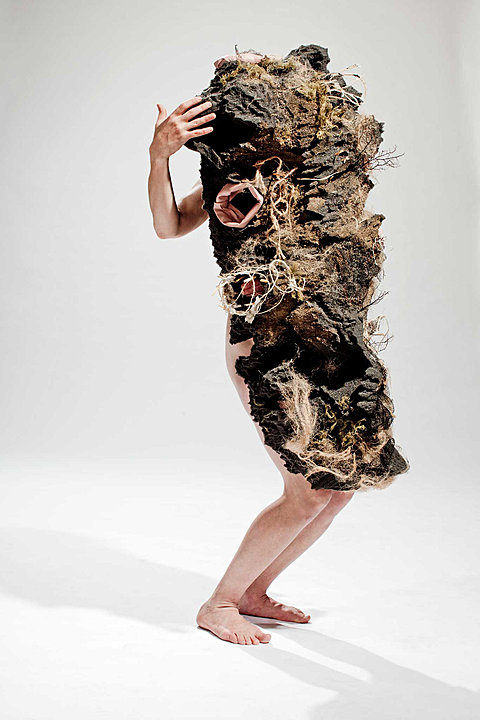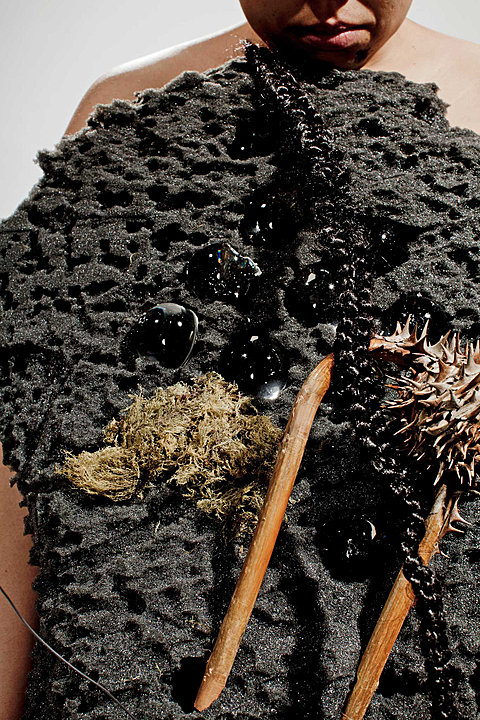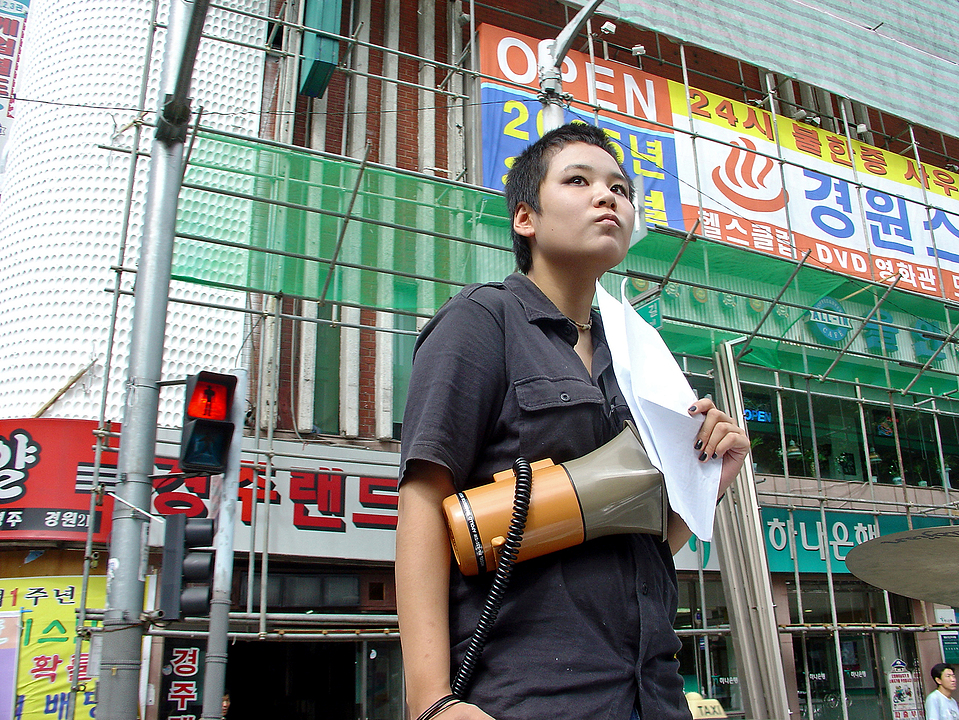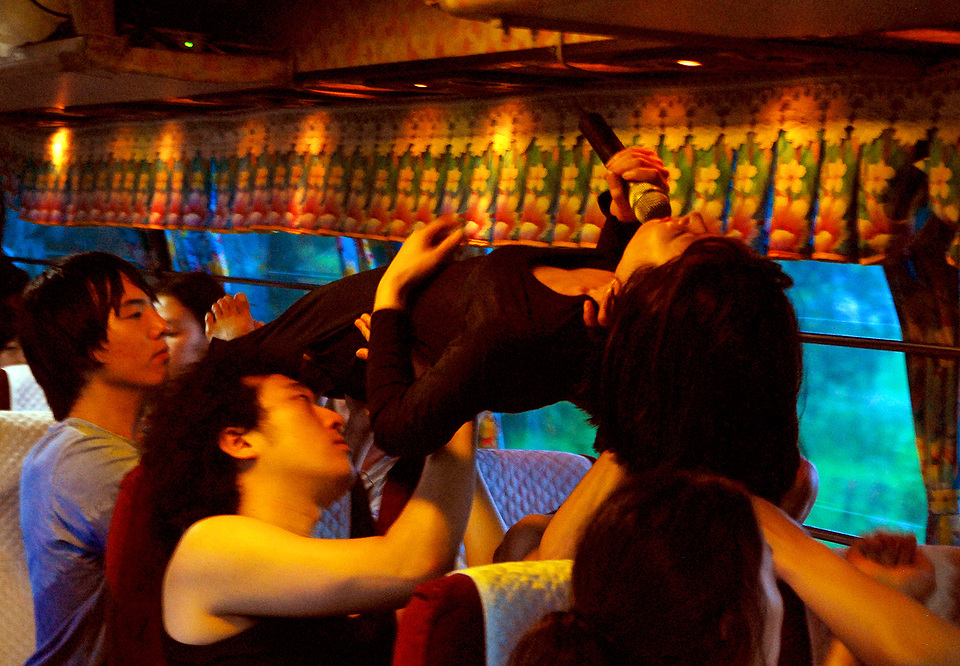Documenting the Almost-Real
Camille LeFevre reviews an installation of video, sculpture and performance now at the Walker, "Minouk Lim: Heat of Shadows," saying it calls to mind both the earliest days of video art and a compelling, if dystopian view of what the near future may hold.




IN 1965, THE KOREAN-BORN INTERDISCIPLINARY ARTIST NAM JUNE PAIK got hold of a Sony Portapak, one of the first battery-powered video recorders. With this new technology, Paik shot footage of Pope Paul VI and his entourage as they toured New York on October 4. That evening, Paik screened the video at the Café au Go Go in Greenwich Village. For some art historians, Paik’s footage marks the day video art came into existence. (For others, Andy Warhol was the progenitor: Earlier that year, he had used a Norelco slant-track video recorder and Concord MTVC 11 video camera to shoot tapes of Edie Sedgwick and incorporate them into his film, Outer and Inner Space.)
Still, there’s little disagreement that Paik was “the George Washington of the movement,” as artist Frank Gillette dubbed him. Or, as the Museum of Broadcast Communications states:
Nam June Paik — composer, performer, and video artist — played a pivotal role in introducing artists and audiences to the possibilities of using video for artistic expression. His works explore the ways in which performance, music, video images, and the sculptural form of objects can be used in various combinations to question our accepted notions of the nature of television.
What separated Paik’s Pope footage from that of a television cameraman’s documentation (and they were all men then, yes?) was that, in true Duchampian fashion, Paik considered the contents of his video tape (reportedly shot from inside a moving cab) a form of artistic expression. And with it, he launched a medium and a genre in which the TV screen (surface), the box in which the television set was housed (form) and its contents (video) became a site of contestation (what is real/documentary? what is fiction/simulacra?).
In addition to creating video art, Paik was instrumental in the Fluxus movement. He played “music,” staged event-like happenings, created installations with TVs, costumed performers in video monitors, and assembled multimedia sculptures comprised of the flotsam and jetsam of the budding electronics age exemplified by television. He also worked with a variety of artists from other disciplines, including singer/dancer/filmmaker Meredith Monk. Still, Paik didn’t receive his first US exhibition until 1982, at the Whitney Museum. About the show, Robert Hughes wrote in Time that “rather than compete with the informational power of ‘real’ television, [Paik] wants to alter the box into a form of pure play, electronic finger painting. It is his solution…to the fact that the TV screen, small and intimate as it is, can never acquire the grand declamatory power of film or canvas.”
What might Hughes, then, make of Korean-born interdisciplinary artist Minouk Lim’s first in-depth US exhibition at the Walker Art Center, Minouk Lim: Heat of Shadows, with its three videos of “performance documentary theater” showing continuously on giant screens? (S.O.S.—Adoptive Dissenus is actually a triptych running across the entire back wall of the gallery.)
Since 1982, the screen has not only exploded in size (whether that’s in home-entertainment systems, 3D Ultrascreens or IMAX cinema), it has also been miniaturized, embedded into our everyday lives. Screens, and the worlds of digital imagery technologically wrought and modified for projection onto them, have also become an integral part of contemporary art, from performance to sculpture. There’s little that’s intimate about screens anymore, despite our emotional attachments to our smartphones. We project our deepest secrets on the computer screen that is our Facebook wall; we watch our profoundest dreams unfurl across a cinematic mega-screen in three dimensions. Television, as an intimate form of art and entertainment, is in many respects obsolete.
There’s something almost nostalgic about Lim’s videos. In the most basic sense, they document a scripted performance. Lim’s New Town Ghost shows a poet rapping, from the back of a moving truck (see Paik, above), about the government’s rapid destruction of Seoul’s neighborhoods and displacement of long-time residents for “better” developments. While New Town Ghost is shot at eye level, the three-channel S.O.S video is projected high up the wall on enormous panels, alternating between video of passengers on a Han River cruise boat and the staged events they encountered, including a young couple cavorting on the shore, shots of concrete infrastructure like parking ramps (with cars flashing their lights), and protestors milling about.
Only The Weight of Hands, shown on a large screen inside a wooden hut set up in the gallery, approaches intimate presentation. This work also moves beyond documentary — it’s essentially a taped, site-specific performance — into something technologically painterly, and poetic. The Weight of Hands juxtaposes shots of a drummer leading a bus; raincoat-wearing figures on a bus tour visiting barren, apocalyptic-looking landscapes and abandoned transportation infrastructure; and shots of people inside the bus, hands lifted, tenderly passing a singer over the seats down the length of the vehicle. The singer has a microphone, and she is singing a haunting, plaintive melody.
From time to time, the figures in Lim’s work turn into amorphous yet vibrantly colored forms in fuchsia, tangerine, purple — an effect created with an infrared camera recording the warmth radiating from the performers’ bodies. This camera was in use during the Lim exhibition’s opening-night performance, Firecliff 3. Choreographed by Minneapolis artist Emily Johnson and created in collaboration with Lim, the work incorporated five performers whose movements, as recorded through the infrared camera, were projected on three panels (the same panels previously screening S.O.S.). Some of the dancers, resembling survivors of an end-of-the-world scenario, shambling with quiet deliberation, carried Lim’s Portable Keepers — long, staff-like artifacts assembled from wood, fabric, feathers, plastic, thorns, and sparkles. Others embraced, wore, or wove around their bodies Lim’s Wearable Sculptures — constructed of thermofoam, bones, and other natural and synthetic materials. Lim and Johnson narrated the work from the top of the hut in the gallery. (Johnson’s spoken text invoked the mythology of her Native American heritage with the charismatically enveloping persona she deploys in performance.)
In this performance, Lim’s concerns were clear: The death of nature; the urbanization of mythology; the fabrication of new totems and relics, from the detritus of the 21st century, that function as an archaeology of an ongoing annihilation; the degradation of communities, human and otherwise.
Lim’s Portable Keepers and Wearable Sculptures remain on view as part of the exhibition, along with bone-like bits and volcanic-looking debris placed along the hut’s exterior shelves that, with their end-of-nature materiality and sci-fi intimations, evoke both curiosity and horror. Who are the people inhabiting Lim’s imaginary world? In the narrative of this work, who “made” these things? Us, perhaps — or, perhaps “us” from a reality not quite parallel to our own.
Minouk Lim: Heat of Shadows is a documentary of sorts, a record incorporating both real and imaginary aspects of life as we live it now and may, perhaps, live it in the future. Robert Hughes, writing about Paik’s exhibition, noted that video “can involve you and even promote an occasional sense of mystery; and this, if not always profoundly, is what Nam June Paik’s installations do.” It is also something Minouk Lim’s installations do — which makes her an intriguing, if not wholly original, successor to Paik’s legacy.
______________________________________________________
Related exhibition details:
Minouk Lim: Heat of Shadows is on view at the Walker Art Center in Minneapolis through September 2. Read Lim’s recent essay about her work, “Journey’s of the 25th Hour,” written for the Walker’s website.
______________________________________________________
About the author: Camille LeFevre is a Twin Cities arts journalist, teaches arts journalism at the University of Minnesota, and has written books about dance and architecture.